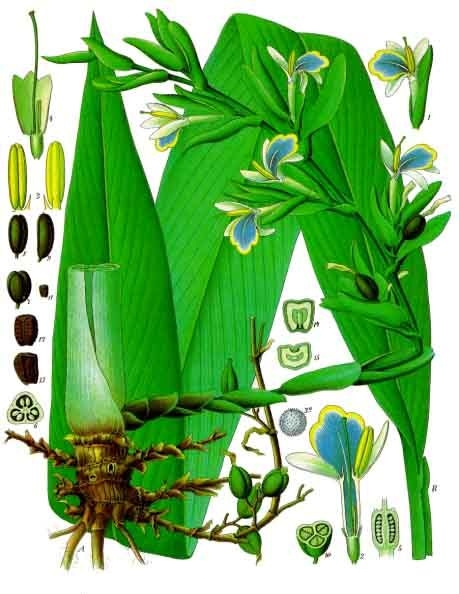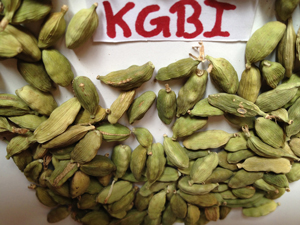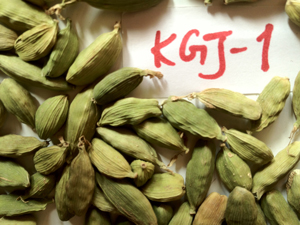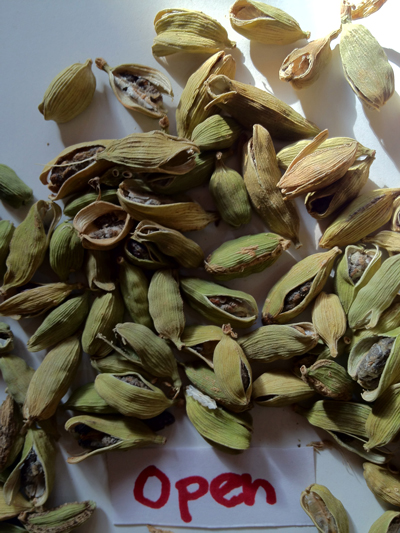

Cardamom
Description
Belonging to the ginger family and hailing from India, Sri Lanka and Nepal,
cardamom has been traded in India for over millennia now, though the actual history of
cardamom is perhaps over 4,000 years old involving the Greeks, Romans, Indian and Egyptians.
It was known as the Queen of Spices, with black pepper being the King. Also known as cardamon,
Grains Of Paradise, Ela (in Sanskrit) and elachi or elaichi (in India), it has numerous health
benefits,due to a high concentration of volatile oils. Some cultures considered it to be an
aphrodisiac and even Arabian Nights has many references to it. A 1500 BC document named the
Ebers Papyrus chronicles its used by ancient Egyptians for medicines, ritualistic and embalming
practices, apart from chewing the pods to cleanse the teeth and render a freshness to breath.
Cardamom has also been used for perfumes, aromatic oils and ointments.

The Cardamom Tree
(Source:
http://pharm1.pharmazie.uni-greifswald.de/allgemei/koehler/koeh-eng.htm)
Growth
A perennial bush of the ginger family, with sheathed
stems reaching 2-5m (6-16 feet) in height. It has a
large tuberous rhizome and long, dark green leaves
30-60 cm (1-2 ft) long, 5-15 cm (2-6”) wide. It
grows in the tropics, wild and in plantations.
Trailing leafy stalks grow from the plant base at
ground level. These bear the seed pods. The flowers
are green with a white purple-veined tip.
In plantation cultivation, forest undergrowth is
cleared and trees thinned to give just enough shade
and the rhizome or seeds planted at 3m (10 ft)
intervals. The plants are gathered in
October-December, before they ripen, to avoid the
capsules splitting during drying. They are dried in
the sun or bleached with sulphur fumes.
The small,
brown-black sticky seeds are contained in a pod in
three double rows with about six seeds in each row.
The pods are between 5-20 mm (1/4”-3/4”) long, the
larger variety known as ‘black’, being brown and the
smaller being green. The pods are roughly triangular
in cross section and oval or oblate. Their dried
surface is rough and furrowed, the large ‘blacks’
having deep wrinkles. The texture of the pod is that
of tough paper. Pods are available whole or split
and the seeds are sold loose or ground.
(Some information above has been taken from
Wikipedia)
Health Benefits
According to Ayurveda, it improves blood circulation
to the lungs and can be helpful in prevention of spasms
or convulsions. Hence, cardamom in small quantities is
beneficial for those suffering from asthma or bronchitis.
Cardamom enhances appetite and provides relief from
acidity in the stomach. It is used in the cure of halitosis.
It is beneficial for those suffering from various kinds
of respiratory allergies. When you have sore throat, you
can try out a little quantity of this medicinal spice.
Those suffering from nausea as well as excessive threat
can also try out cardamom. Along with some other medicines,
it can be used for treating mouth ulcers. It is known to be
a good cure for weakness in general. Some practitioners of
Ayurveda also advise its use for treating infection of the
urinary tract.
Grading
We grade cardamom in
to numerous categories based on the colour, size and
overall appearance, from jumbo sizes of a deep green
colour and a pungent aroma to yellowish ones of
small size with open pods, depending on the market
and application. Very soon, we will have
organic certified cardamom as well.

Cardamom Jumbo Green

Cardamom Imperial Big Green

Cardamom Jumbo Green Closer Look

Cardamom Open Pods
For further
information about availability, quality, price, please
contact us.
Home


















